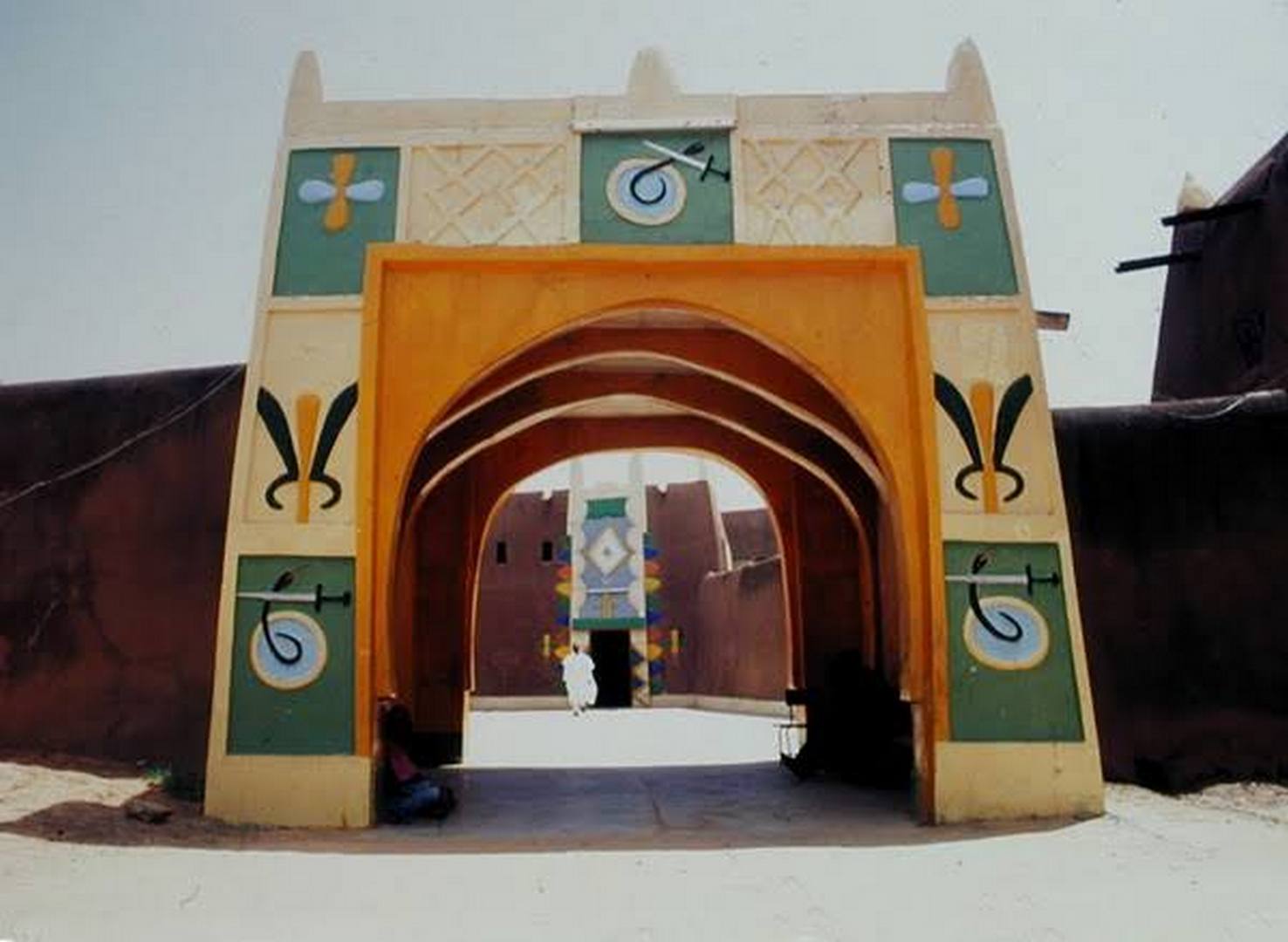During the 19th century, there used to be a huge tamarind tree on the Palace grounds under which the Emir turbaned District Chiefs and other titleholders during the Fulani Dynasty. This Tamarind tree, which pre-dated the Fulani’s, seems to have had some significance for rituals during the period of Habe rulers. Previously, the Palace extended eastwards to the compound of Sarkin Bai at the rear. This entrance, known as Kofar Bai (the slaves’ gate) was controlled by Sarkin Bai and the Fada Babba. In pre-colonial days, only throne slaves were permitted to enter or leave the Palace by the rear gate, while the front gate was open to persons of any status. Both gates were guarded by slaves, who also stood guard at both the forecourt and the rear sections of the Palace. The area directly behind the Sarki’s private quarters within the Palace is known as ‘Shamaki’ (stables). This section harbored State treasures which were kept in store houses. Also, in the corner of Shamaki were the prisons manage by ‘Ajiya’.
The Sarki’s private quarters also harbored compounds of minor slave officials such as Sarkin Zagi who lived in the palace. This section also known as ‘Kangiwa’, (the elephant’s head), is traditionally reserved for important state ceremonies, show of horsemanship and paying homage to the Sarki during Muslim festivals. After their victory, the Fulani built a new mosque at the Kangiwa immediately beside the palace gate.
The Daura royal regalia are kept in the palace, with the Emir as the chief custodian. The regalia consist of three state swords, one of which has hieroglyphic inscriptions on its blade and is attributed to Bayajidda, the founder of the Sarauta system in Hausaland. The second belongs to Danbaura, the Chief of Maradi, (now in Niger Republic) while the third is known as ‘Gajere’ (the short one). The regalia also include a string of amulets, a cap, a shirt of amulets, two finger rings, a silver pan, a Muslim rosary, two royal saddles (one of which comes from North Africa), a chain mail and silk cotton armor, Turu drum, and three Tambura drums (of which Gamagira is the largest). The rest are two drums of Dantomo and the calabash drums used by Dakama.
In the ancient times, on the day of enthronement of a new Sarki, the Kingmakers would instruct the Dantomo to beat the tune calling for people to assemble. Slaves would then raise a platform to serve as a throne beneath the ancient tamarind tree that formally stood inside the palace court. This platform was covered with the richest carpets and clothes in the palace. The garments in which the new Sarki would appear were then laid upon it, together with a turban, burnoose, the rings and amulets mentioned above, and one of the state swords. A new pair of embroidered shoes decorated with Ostrich feathers is placed before the throne.
While the assembly waited, the Kaura and Galadima would lead the Sarki designate to the mosque in the palace forecourt, which had a special room reserved for these occasions. Throne slaves follow, bringing the new garments. The Galadima and Fada Babba would then dress the new Sarki in his new royal clothes and present to him the robes, burnoose, and shoes of office, while the Kaura puts on his turban. The new Sarki then girds his sword and returns to the forecourt, while Dakama beat his drums and sings the ceremonial song (Take) of the former Sarakuna of Daura, including the new ruler’s ancestors. When this is over, the new Sarki takes a drum stick and beats the Gamagira (drum) a dozen times. This is perhaps the decisive act in the ceremony, the moment of accession. The senior throne slaves then sat the Sarki on the dais for the first time, spreading their robes to shield him from public view as he sits. Thus the accession is completed.


